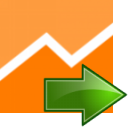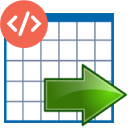Google Analytics Connector for SSIS
Google Analytics Connector can be used to read data from Google Analytics Service without learning complex API. Easy to use interface allows you extract large amount of data adjusting parameters such as dimensions, metrics, filters, sortby, date range etc. You can also use inbuilt reports or specify direct query URL to get desired data.
In this article you will learn how to quickly and efficiently integrate Google Analytics data in SSIS without coding. We will use high-performance Google Analytics Connector to easily connect to Google Analytics and then access the data inside SSIS.
Let's follow the steps below to see how we can accomplish that!
Google Analytics Connector for SSIS is based on ZappySys Native SSIS Connector Framework which is a part of SSIS PowerPack. It is a collection of high-performance SSIS connectors that enable you to integrate data with virtually any data provider supported by SSIS, including SQL Server. SSIS PowerPack supports various file formats, sources and destinations, including REST/SOAP API, SFTP/FTP, storage services, and plain files, to mention a few (if you are new to SSIS and SSIS PowerPack, find out more on how to use them).
Video Tutorial - Integrate Google Analytics data in SSIS
This video covers the following topics and more, so please watch carefully. After watching the video, follow the steps outlined in this article:
- How to download and install the required PowerPack for
Google Analytics integration in SSIS - How to configure the connection for
Google Analytics - Features of the
Source (Authentication / Query Language / Examples / Driver UI) - How to use the
Google Analytics in SSIS
Prerequisites
Before we begin, make sure the following prerequisites are met:
- SSIS designer installed. Sometimes it is referred as BIDS or SSDT (download it from Microsoft).
- Basic knowledge of SSIS package development using Microsoft SQL Server Integration Services.
- ODBC PowerPack is installed (if you are new to SSIS PowerPack, then get started!).
Read data from Google Analytics in SSIS using Google Analytics Source
This section provides a practical guide on how to extract data from Google Analytics using the Google Analytics Source component within SSIS (SQL Server Integration Services) via the ZappySys PowerPack.
-
Begin with opening Visual Studio and Create a New Project.
-
Select Integration Service Project and in new project window set the appropriate name and location for project. And click OK.
In the new SSIS project screen you will find the following:
- SSIS ToolBox on left side bar
- Solution Explorer and Property Window on right bar
- Control flow, data flow, event Handlers, Package Explorer in tab windows
- Connection Manager Window in the bottom
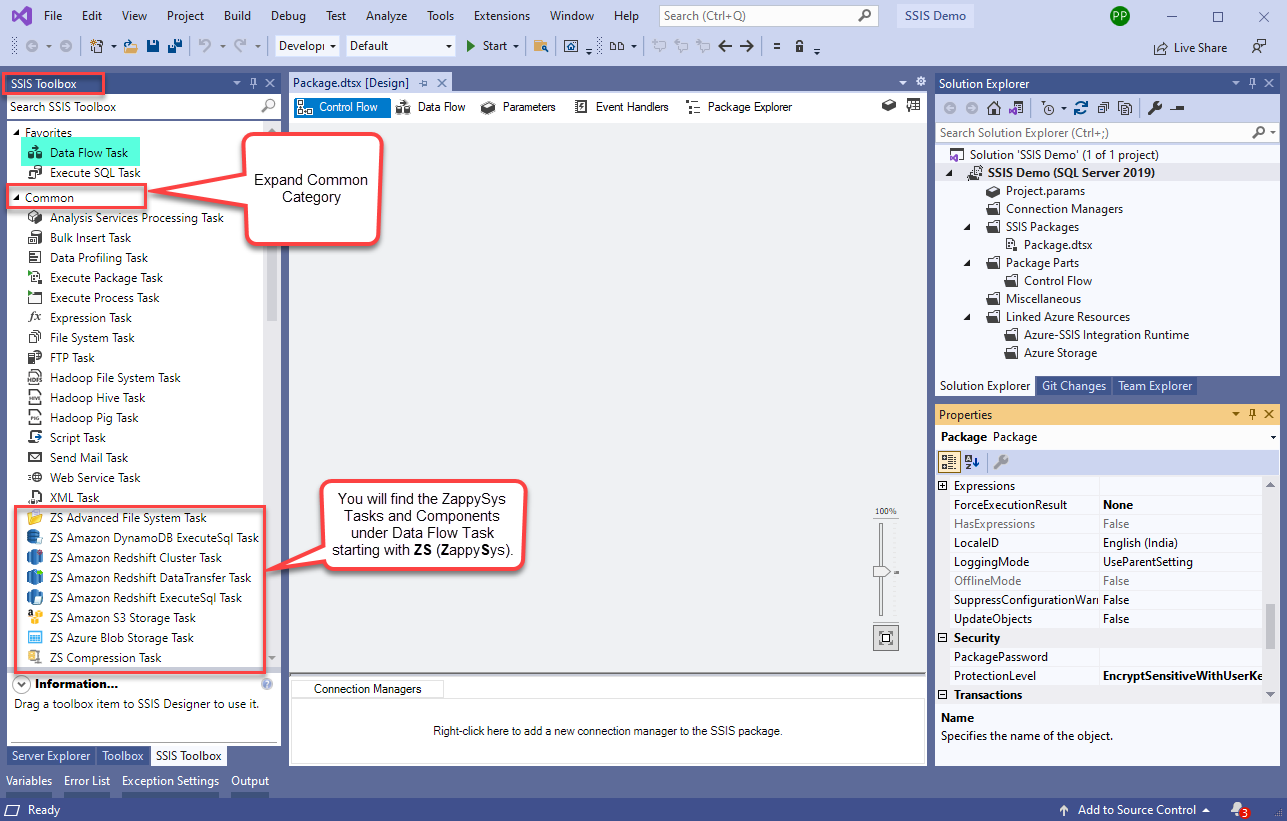 Note: If you don't see ZappySys SSIS PowerPack Task or Components in SSIS Toolbox, please refer to this help link.
Note: If you don't see ZappySys SSIS PowerPack Task or Components in SSIS Toolbox, please refer to this help link. -
Now, Drag and Drop SSIS Data Flow Task from SSIS Toolbox. Double click on the Data Flow Task to see Data Flow designer.

-
From the SSIS toolbox drag and drop Google Analytics Source on the dataflow designer surface

-
Double click on Google Analytics Source component to configure it.
-
Next, set up the Google Analytics Source Connection. For detailed instructions, visit Google Data Connection documentation.
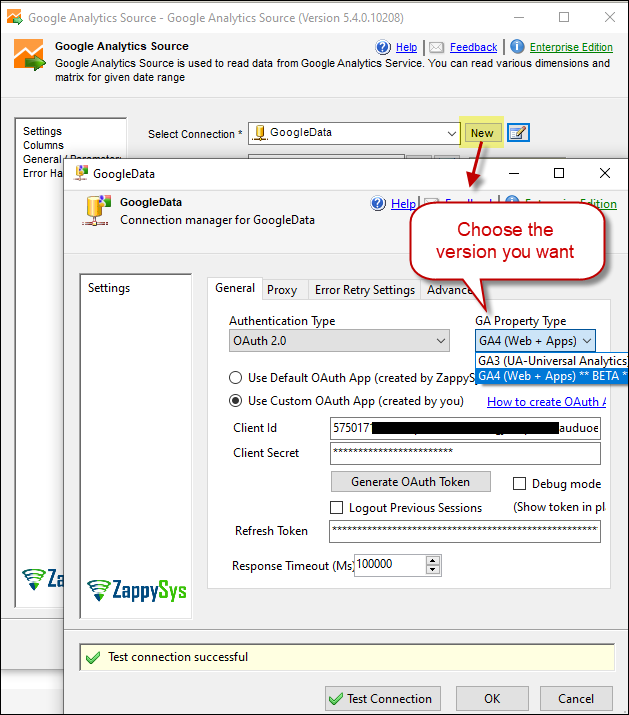
-
Configuring the Google Analytics Source:
-
Select View(s) or Profile(s):
- Select the created Google Analytics Source Connection.
-
Choose the specific View(s) or Profile(s) from which you want to extract data.
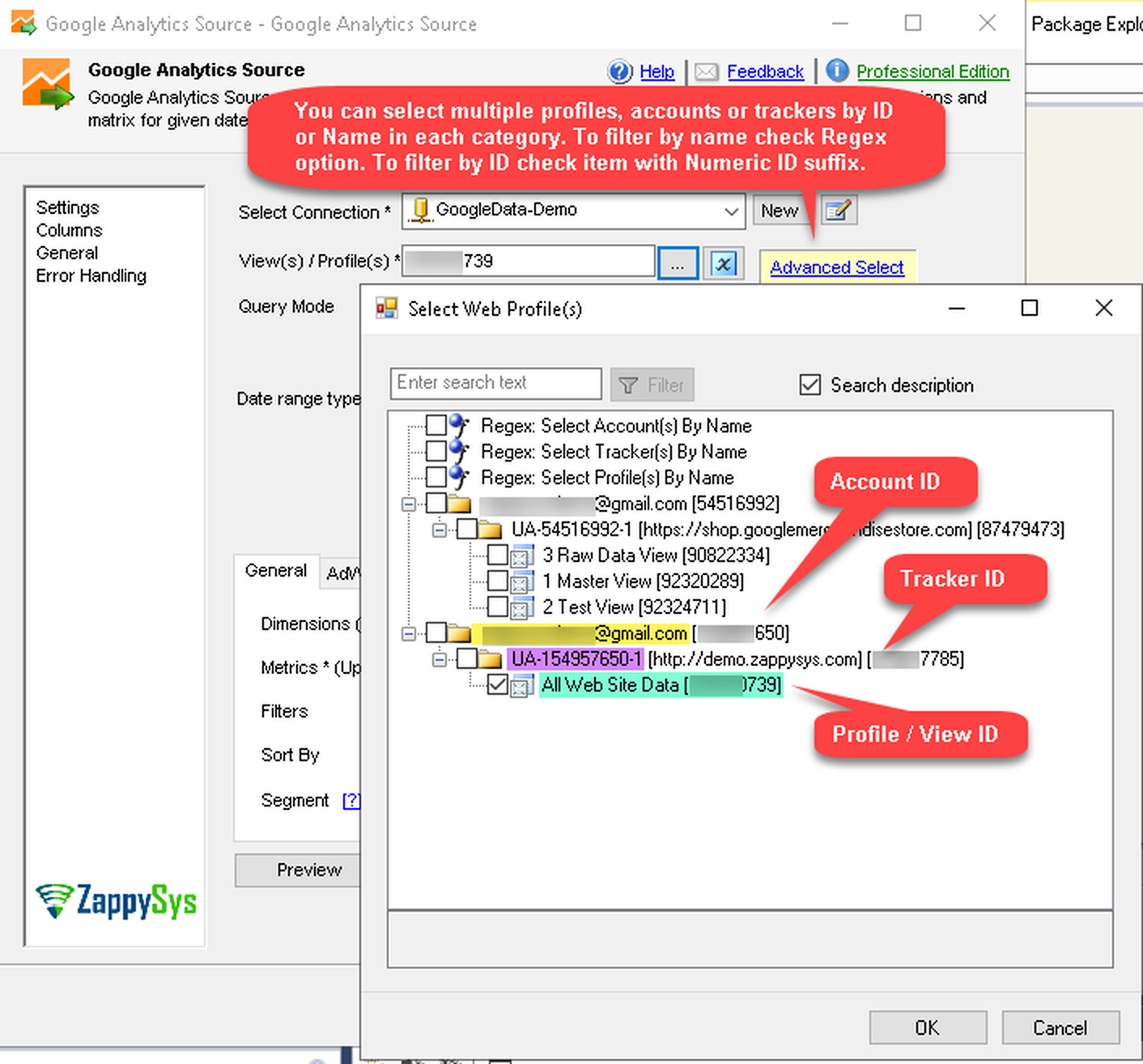
-
Query Mode: Set the Query Mode to
Automatic - Build your own URL. This mode allows for granular control over the data retrieval using URL query parameters. -
Date Range:
- Set the Date range type to
Custom date range. -
Specify the start and end dates for your report. You can use variables for dynamic date ranges, which is very useful for automation.
Example: You can use SSIS variables named ReportStartDate and ReportEndDate.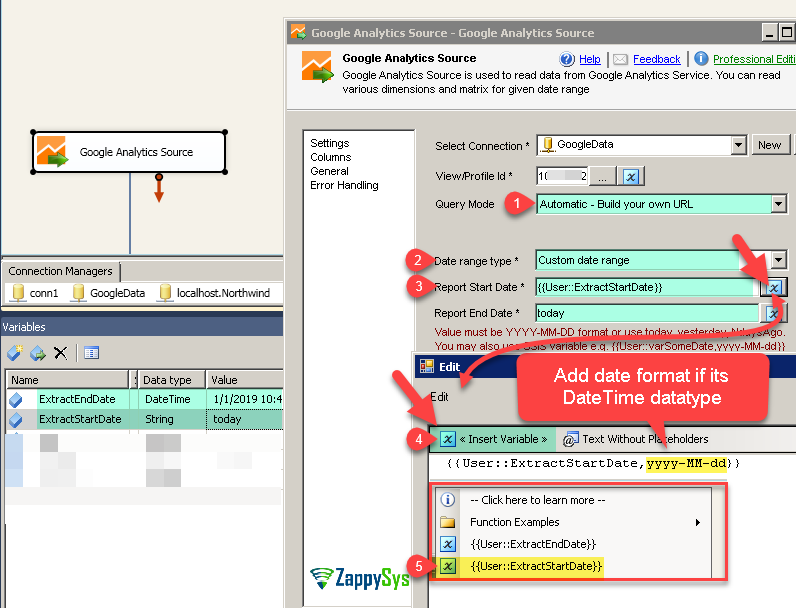
- Set the Date range type to
-
Dimensions: Select the dimensions you want to include in your report (e.g., “date”, “pagePath”, “country”). You can select up to 7 dimensions.
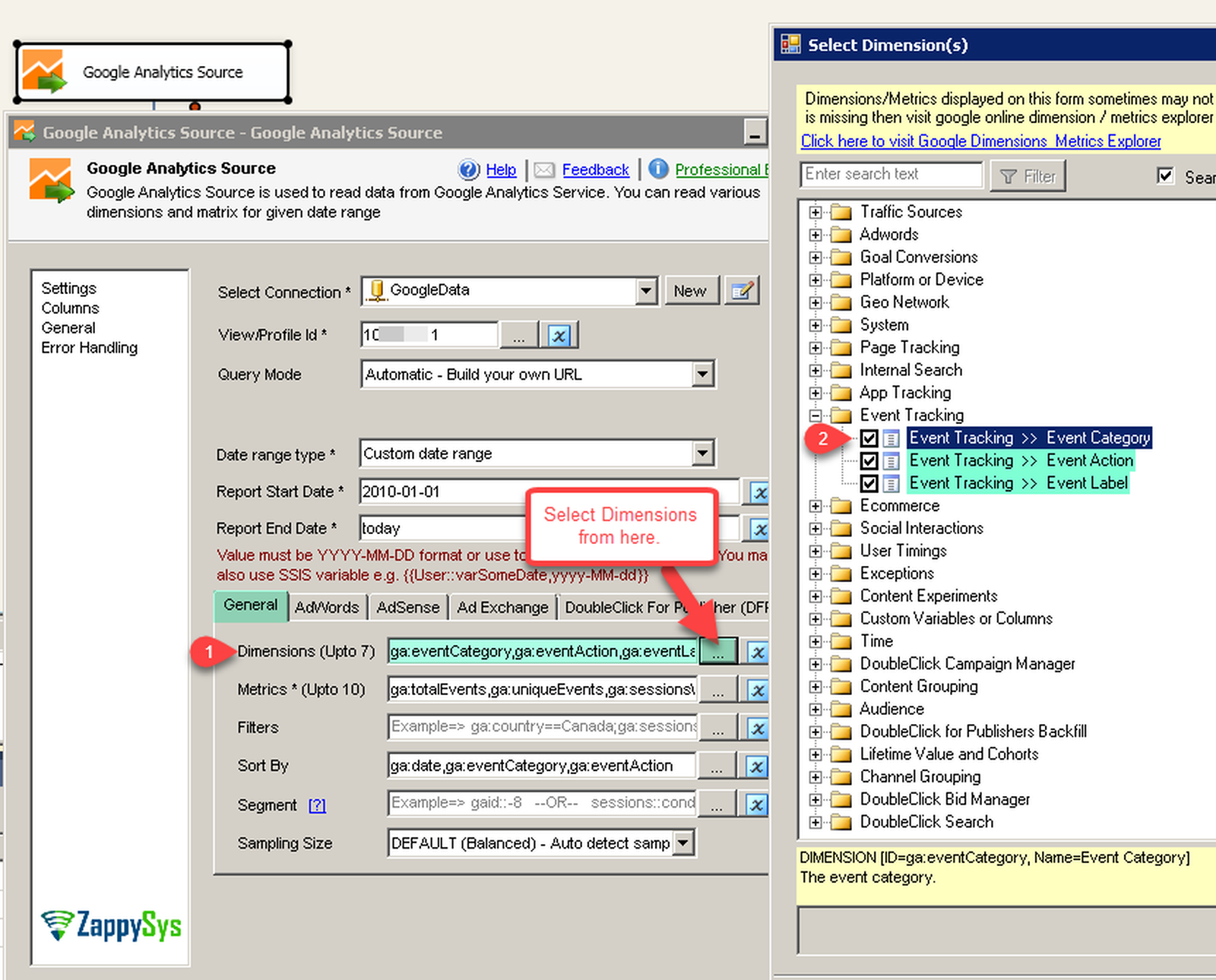
-
Metrics: Select the metrics you want to retrieve (e.g., “sessions”, “pageviews”, “users”). You can select up to 7 metrics.
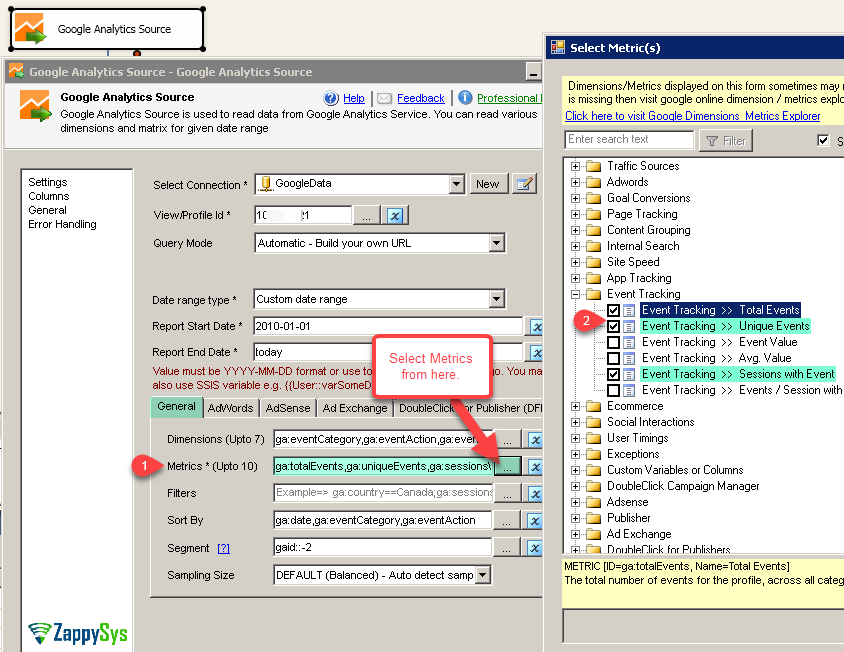
-
Filters: Optionally, apply filters to narrow down the data based on specific criteria (e.g., filtering for traffic from a particular country).
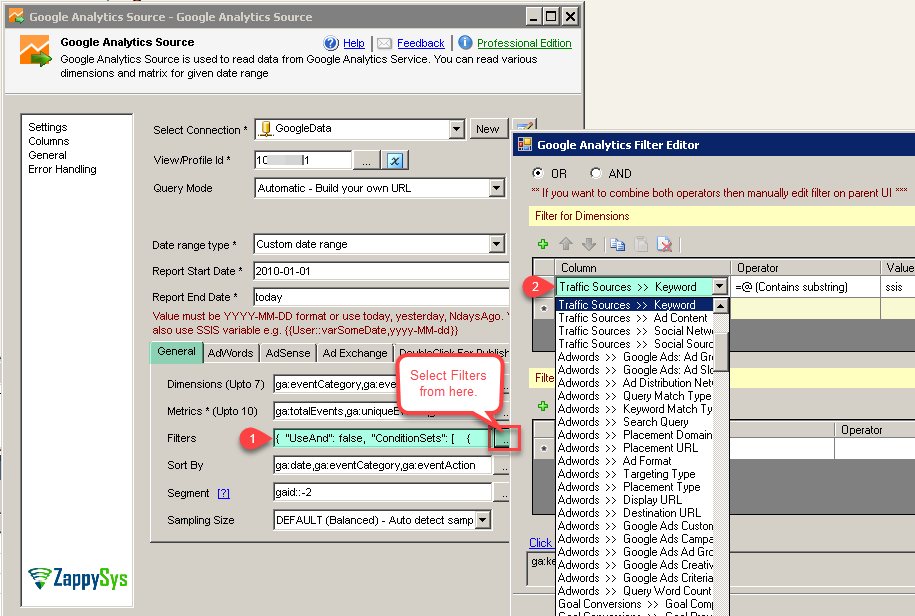
-
Sort By: Optionally, specify how the data should be sorted (e.g., sorting by “sessions” in descending order).
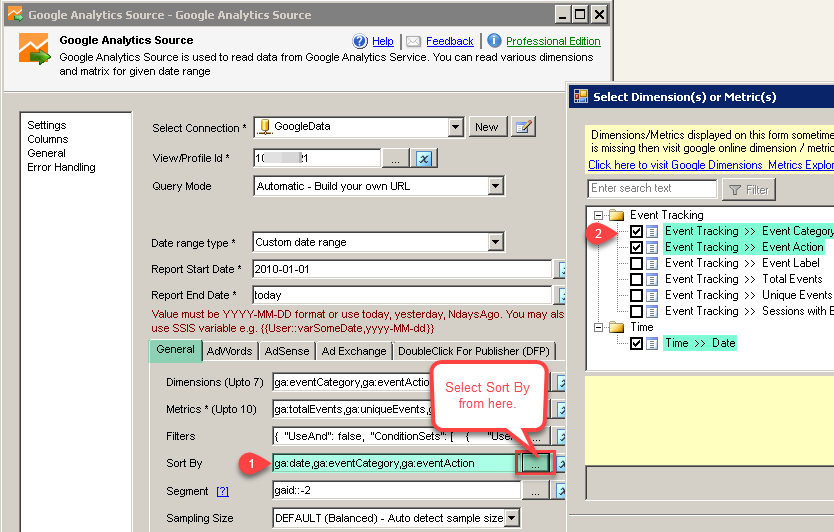
-
Segments: Optionally, apply segments to analyze specific subsets of your data.
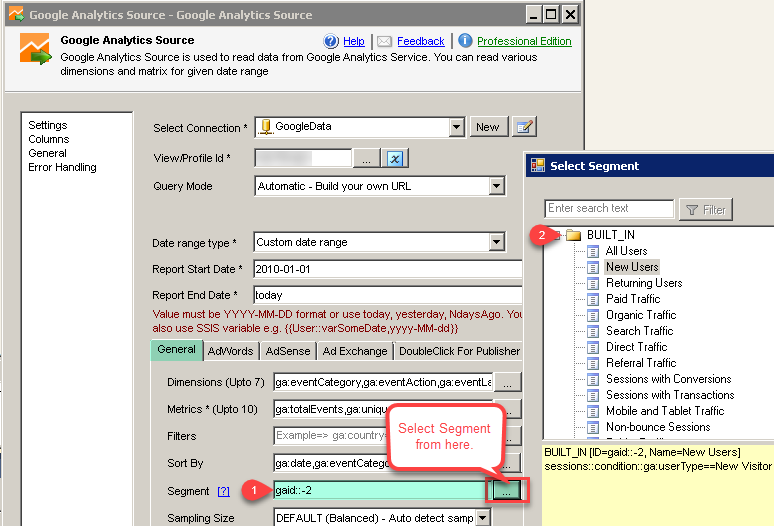
-
Select View(s) or Profile(s):
-
Data Preview and Saving:
- Click the Preview button to view a sample of the data that will be extracted. This allows you to verify your configuration.
-
Click the OK button to save the configuration settings for the Google Analytics Source.

That's it. Now you can now connect the Google Analytics Source to other data flow components, such as a Destination component, to load the extracted data into a database, file, or other destination.
Load Google Analytics data into SQL Server using Upsert Destination (Insert or Update)
Once you configured the data source, you can load Google Analytics data into SQL Server using Upsert Destination.
Upsert Destination can merge or synchronize source data with the target table.
It supports Microsoft SQL Server, PostgreSQL, and Redshift databases as targets.
Upsert Destination also supports very fast bulk upsert operation along with bulk delete.
Upsert operation
- a database operation which performs INSERT or UPDATE SQL commands
based on record's existence condition in the target table.
It
Upsert Destination supports INSERT, UPDATE, and DELETE operations,
so it is similar to SQL Server's MERGE command, except it can be used directly in SSIS package.
-
From the SSIS Toolbox drag-and-drop Upsert Destination component onto the Data Flow designer background.
-
Connect your SSIS source component to Upsert Destination.
-
Double-click on Upsert Destination component to open configuration window.
-
Start by selecting the Action from the list.
-
Next, select the desired target connection or create one by clicking <New [provider] Connection> menu item from the Target Connection dropdown.
-
Then select a table from the Target Table list or click New button to create a new table based on the source columns.
-
Continue by checking Insert and Update options according to your scenario (e.g. if Update option is unchecked, no updates will be made).
-
Finally, click Map All button to map all columns and then select the Key columns to match the columns on:
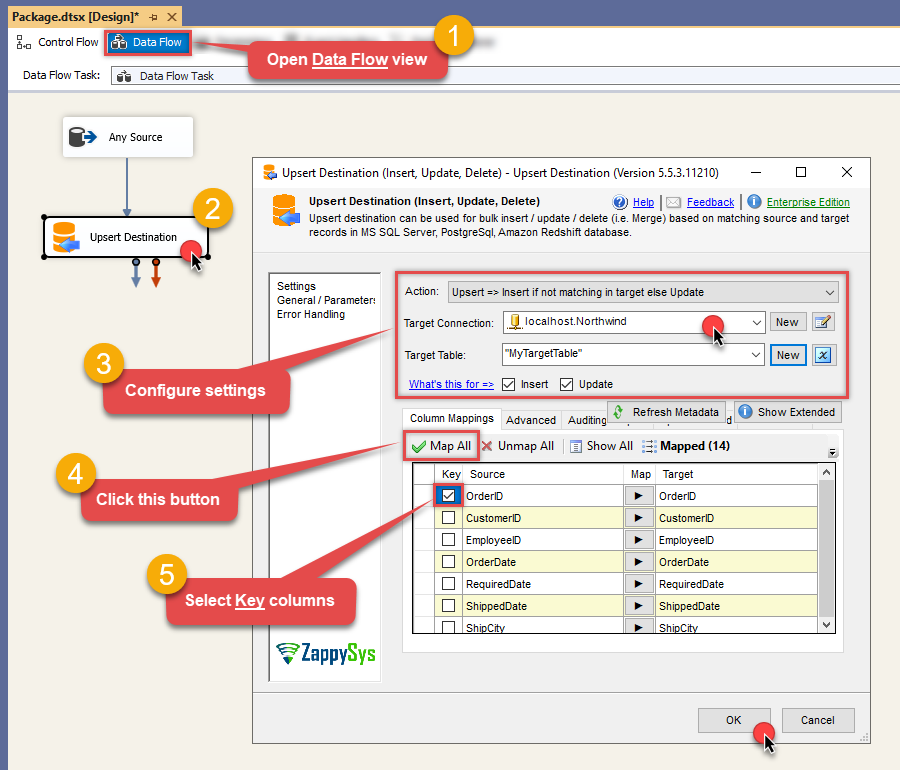
-
Click OK to save the configuration.
-
Run the package and Google Analytics data will be merged with the target table in SQL Server, PostgreSQL, or Redshift:
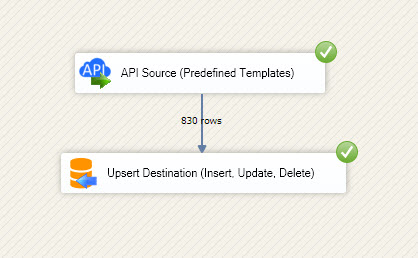
-
Done!
Deploy and schedule SSIS package
After you are done creating SSIS package, most likely, you want to deploy it to SQL Server Catalog and run it periodically. Just follow the instructions in this article:
Running SSIS package in Azure Data Factory (ADF)
To use SSIS PowerPack in ADF, you must first prepare Azure-SSIS Integration Runtime. Follow this link for detailed instructions:
Conclusion
In this article we showed you how to connect to Google Analytics in SSIS and integrate data without any coding, saving you time and effort.
We encourage you to download Google Analytics Connector for SSIS and see how easy it is to use it for yourself or your team.
If you have any questions, feel free to contact ZappySys support team. You can also open a live chat immediately by clicking on the chat icon below.
Download Google Analytics Connector for SSIS Documentation

